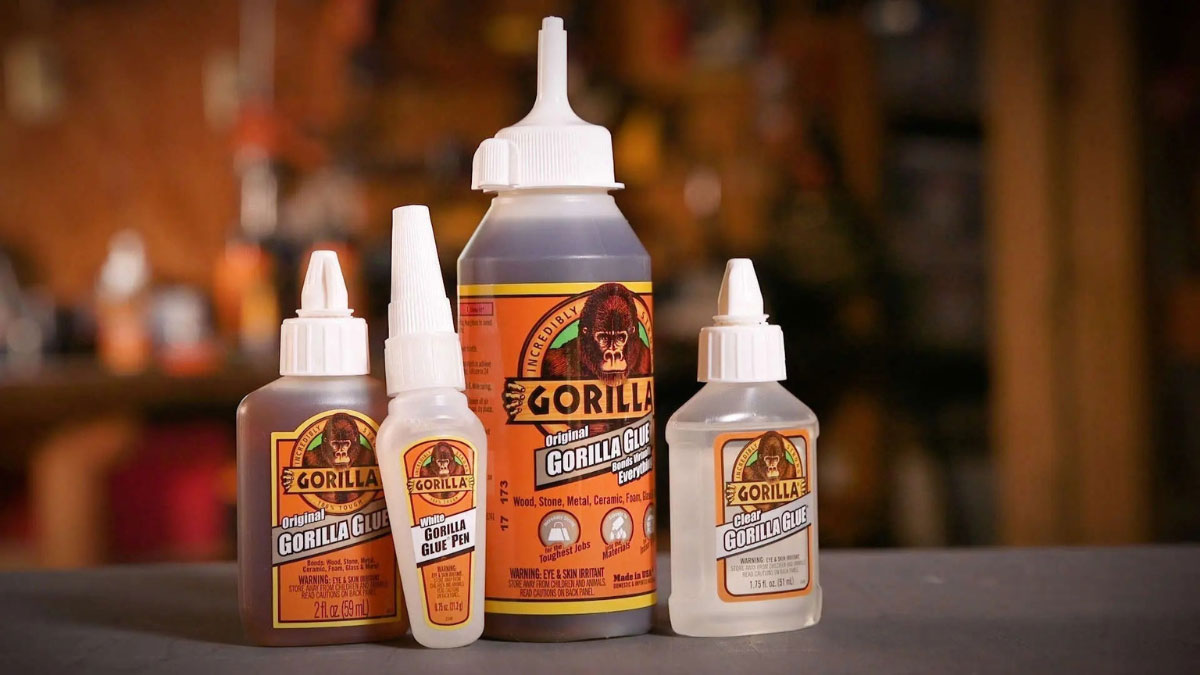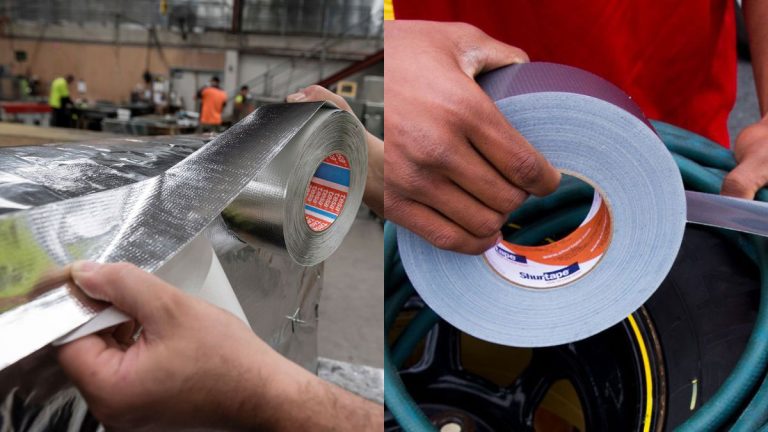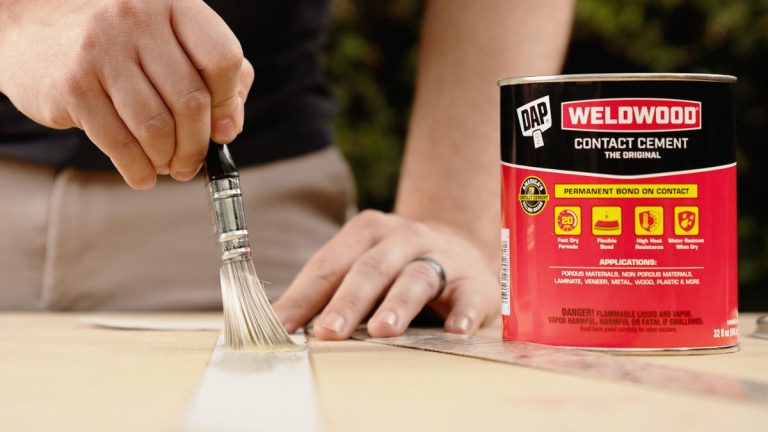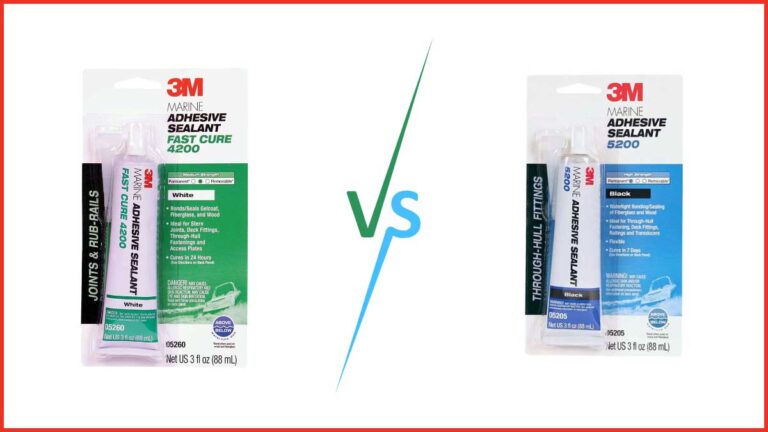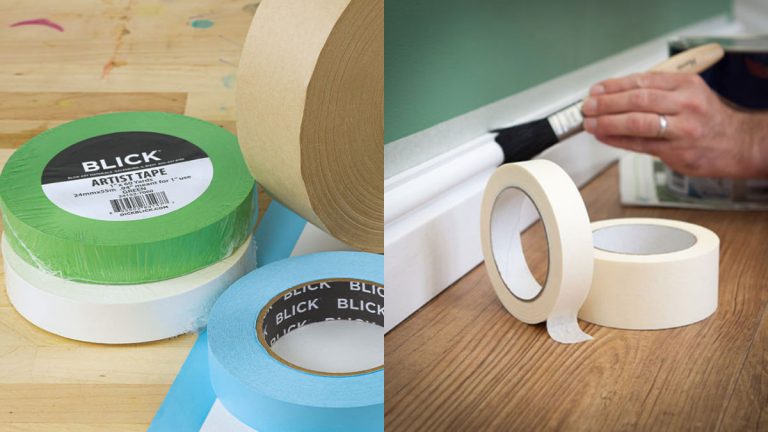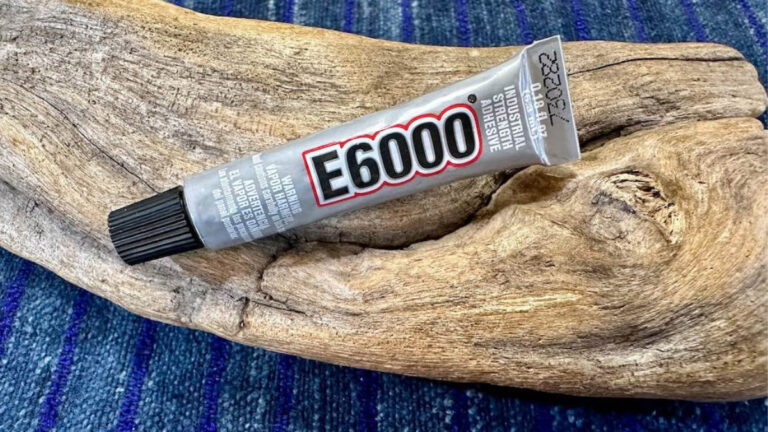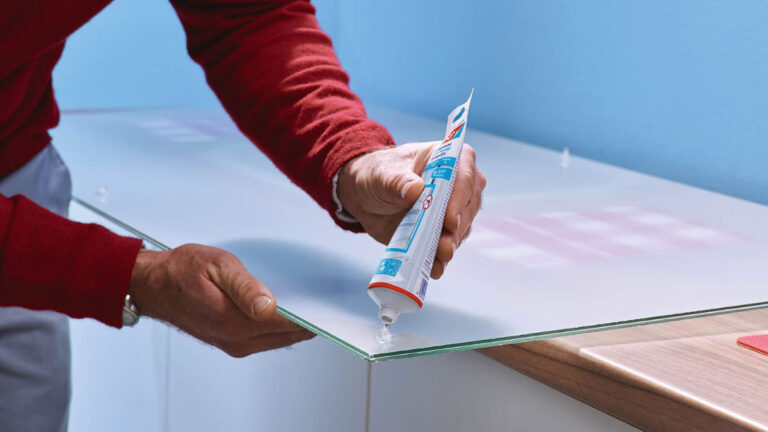Does Gorilla Glue Work on Plastic? Find Out Here
Ever found yourself with a broken plastic item and wondered if Gorilla Glue could save the day? You’re not alone. Many DIY enthusiasts and casual fixers alike turn to this popular adhesive, hoping it can bond their plastic pieces back together. But does it really work on plastic?
Gorilla Glue is renowned for its strong, reliable hold on a variety of materials, but plastic can be tricky. Different types of plastic react differently to adhesives, and knowing whether Gorilla Glue is up to the task can save you time and frustration. Let’s jump into what makes Gorilla Glue effective and whether it’s the right choice for your plastic repair needs.
Key Takeaways
- Plastic Type Matters: Gorilla Glue’s effectiveness varies with different plastic types; it struggles to bond strongly with polypropylene and polyethylene.
- Surface Preparation is Crucial: Proper cleaning, roughening, and drying of plastic surfaces enhance Gorilla Glue’s adhesion.
- Application Process: Following specific steps including applying the right amount of glue, aligning pieces, and clamping them, ensures stronger bonds.
- Limited Performance: Both Original and Super Glue formulas offer limited performance with common plastics due to their smooth surfaces and chemical properties.
- Environmental Factors: Temperature and humidity significantly influence Gorilla Glue’s curing process and bond strength.
Key Plastic Types
Understanding the types of plastic helps you choose the right adhesive for your projects. Not all adhesives work on all plastics, and Gorilla Glue has varied effectiveness.
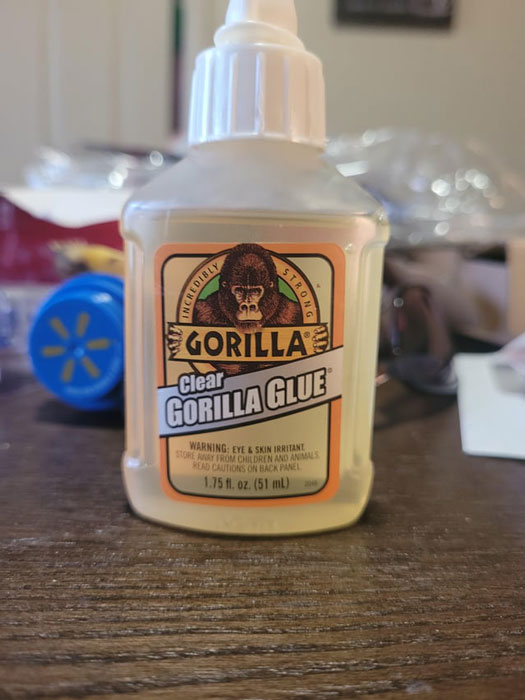
Polypropylene
- Definition: Polypropylene (PP) is a thermoplastic polymer used in packaging, textiles, automobile components, and more.
- Properties: PP is known for its toughness, fatigue resistance, and chemical resistance. It’s often used in applications requiring durability and flexibility.
- Gorilla Glue Effectiveness: Gorilla Glue, including its Original formula and Super Glue, struggles to bond with polypropylene. The molecular structure of this plastic resists forming a strong bond with these adhesives, making repairs less reliable or durable.
Polyethylene
- Definition: Polyethylene (PE) is a common plastic used in packaging, containers, plastic bags, and bottles.
- Properties: PE is prized for its ductility, impact resistance, and moisture barrier properties. It comes in various densities, such as HDPE (High-Density Polyethylene) and LDPE (Low-Density Polyethylene).
- Gorilla Glue Effectiveness: Gorilla Glue’s bonding capability with polyethylene is limited. Both the Original and Super Glue formulas do not adhere well to PE due to its smooth surface and lack of necessary moisture for proper curing. This results in weak or non-durable bonds.
Summary
For efficient plastic repairs, consider the plastic type. Both polypropylene and polyethylene present bonding challenges with Gorilla Glue. Explore alternative adhesives specifically designed for these materials, or refer to product specifications for best results.
Application Process
Using Gorilla Glue on plastic requires careful preparation and specific steps to ensure strong adhesion. This section provides detailed instructions on surface preparation and the gluing process.
Surface Preparation
Proper surface preparation is key to achieving a strong bond with Gorilla Glue, especially on plastic.
- Clean: Ensure surfaces are clean and free of dust, grease and other contaminants. Use isopropyl alcohol or a mild detergent for best results.
- Roughen: For shiny or smooth plastics, roughen the surface with fine-grit sandpaper. This enhances the glue’s grip by providing texture.
- Dry: Make sure both surfaces are dry. For Original Gorilla Glue, lightly dampen one surface as it helps with curing.
Gluing Steps
Following the correct gluing steps ensures a successful bond.
- Apply Glue: Squeeze a small amount of glue onto the dry surface. Avoid over-application as the glue expands while curing.
- Position: Align the two surfaces and press them together.
- Clamp: Secure the pieces with a clamp or heavy object to maintain contact until the glue sets. This can take a few hours depending on the plastic type.
- Cure Time: Allow the bond to fully cure, which can take up to 24 hours.
Data Table
The table below summarizes the steps and considerations when using Original Gorilla Glue on different plastic types:
| Step | Action | Importance |
|---|---|---|
| Clean | Remove dust and grease | Ensures maximum adhesion |
| Roughen | Sand shiny surfaces | Enhances grip |
| Dry | Ensure surfaces are dry, dampen one | Aids in curing (Original Glue) |
| Apply Glue | Use a small amount | Prevents excess expansion |
| Position | Align and press surfaces | Ensures even bonding |
| Clamp | Hold pieces together until set | Maintains contact |
| Cure Time | Allow 24 hours to cure fully | Ensures bond strength |
Use this guide to effectively bond plastics with Gorilla Glue, ensuring durable and reliable repairs.
Performance Analysis
To understand the effectiveness of Gorilla Glue on plastic, it’s crucial to analyze its performance in various aspects. This section provides detailed insights into adhesion strength, drying time, and longevity of the adhesive on plastic materials.
Adhesion Strength
- Original Gorilla Glue: Effectiveness on plastic is limited. It’s not effective on common plastics, like polypropylene and polyethylene. These plastics have a smooth surface and lack the necessary chemical properties for a strong bond, making Gorilla Glue unsuitable.
- Gorilla Super Glue: Performs slightly better but still struggles with polyethylene and polypropylene. Cyanoacrylate adhesive in Super Glue requires moisture to cure, which these plastics don’t provide, resulting in weak bonds.
Drying Time
- Original Gorilla Glue: Takes several hours to cure. Needs moisture to activate and expands into the materials to form a bond. The extended drying time can be impractical for quick fixes.
- Gorilla Super Glue: Dries significantly faster. Typical drying time ranges from 10-45 seconds, making it suitable for quick repairs. But, effectiveness varies based on plastic type.
Longevity
- Original Gorilla Glue: Provides durable bonds on materials other than plastic. For plastic repairs, longevity is compromised due to poor chemical bonding with polypropylene or polyethylene.
- Gorilla Super Glue: Offers long-lasting bonds on plastics with good chemical compatibility. When applied to non-compatible plastics, bond longevity is short-lived.
| Glue Type | Compatible Plastics | Drying Time | Bond Longevity |
|---|---|---|---|
| Original Gorilla Glue | Limited | Several hours | Poor on polypropylene/polyethylene |
| Gorilla Super Glue | Limited | 10-45 seconds | Short-lived on non-compatible plastics |
When using Gorilla Glue, it’s essential to consider the type of plastic and adhesive properties. For plastic repairs involving polypropylene or polyethylene, exploring alternative adhesives designed for these materials can yield better results.
Factors Affecting Effectiveness
Several factors influence the effectiveness of Gorilla Glue on plastic. Understanding these factors can help optimize the bonding process and achieve better results.
Environmental Conditions
Environmental conditions like temperature and humidity significantly impact Gorilla Glue’s performance. Ideal conditions ensure optimal curing and bonding strength.
- Temperature: Gorilla Glue cures best between 40°F and 200°F (5°C to 93°C). Temperatures outside this range can slow curing or weaken the bond.
- Humidity: Original Gorilla Glue requires moisture to activate its curing process. A relative humidity level of 30-50% is ideal. For Gorilla Super Glue, low humidity can hinder the curing process.
Plastic Surface Texture
The texture of the plastic surface affects adhesive bonding. Smooth surfaces, particularly, pose challenges for Gorilla Glue.
- Smooth Surfaces: Gorilla Glue struggles to bond with smooth surfaces like polyethylene and polypropylene. Lightly sand these surfaces with fine-grit sandpaper to increase adhesion.
- Textured Surfaces: Textured or rough surfaces offer better grip for the adhesive, resulting in stronger bonds.
Material Compatibility
Not all plastics are compatible with Gorilla Glue. Identifying the type of plastic is crucial for effective bonding.
- Polyethylene (PE) and Polypropylene (PP): These plastics have low surface energy, making them difficult for Gorilla Glue to bond. The glue fails to adhere effectively to these materials.
- Other Plastics: For plastics like PVC, acrylic, and polycarbonate, Gorilla Glue offers better performance. But, always conduct a patch test to ensure compatibility.
Application Process
Proper application is key to achieving a durable bond. Follow these steps for best results:
- Surface Preparation: Clean surfaces with isopropyl alcohol or mild detergent to remove grease and dirt. Dry thoroughly.
- Sanding: Lightly sand smooth surfaces to create a rough texture.
- Glue Application: Apply a small amount of Gorilla Glue to one surface. Avoid over-application to prevent mess.
- Clamping: Firmly clamp the surfaces together. Secure clamps or heavy objects to maintain pressure.
- Curing: Allow up to 24 hours for Original Gorilla Glue to fully cure. Gorilla Super Glue cures in 10-45 seconds but achieves full strength in several hours.
Summary
Understanding these factors can enhance the bonding performance of Gorilla Glue with plastic materials. Proper environmental conditions, surface preparation, material compatibility, and accurate application are crucial for achieving effective and durable repairs.
Conclusion
Gorilla Glue can be an effective adhesive for certain types of plastic, but it’s crucial to understand its limitations. While it’s popular among DIY enthusiasts, it struggles with plastics like polypropylene and polyethylene due to their unique properties. Proper surface preparation and adherence to application guidelines can improve bonding strength, but for these specific plastics, alternative adhesives may be more reliable.
By considering factors such as temperature, humidity, and surface texture, you can optimize the performance of Gorilla Glue for your repair projects. Always check product specifications to ensure you’re using the most suitable adhesive for your needs.
Frequently Asked Questions
Is Gorilla Glue effective for repairing plastic items?
Gorilla Glue can be effective on some plastics, but it has limitations. It does not work well on polyethylene (PE) and polypropylene (PP) due to their molecular structures, which prevent strong adhesion.
What types of plastic can Gorilla Glue bond with?
Gorilla Glue works better with plastics such as PVC, acrylic, and polycarbonate. It’s less effective on polyethylene (PE) and polypropylene (PP).
How should I prepare plastic surfaces before using Gorilla Glue?
Clean the surfaces with isopropyl alcohol or mild detergent, roughen shiny areas with fine-grit sandpaper, and ensure surfaces are completely dry before applying the glue.
What is the drying time for Gorilla Glue on plastic?
Original Gorilla Glue requires several hours to dry, while Gorilla Super Glue dries much faster, typically within 10-45 seconds. Allow up to 24 hours for a full cure.
Can I use Gorilla Glue on polyethylene and polypropylene?
No, Gorilla Glue is generally ineffective on polyethylene and polypropylene because of their molecular structures and smooth surfaces, which hinder bonding.
What are the ideal conditions for using Gorilla Glue on plastic?
For optimal results, use Gorilla Glue in temperatures between 40°F and 200°F, with humidity levels between 30% and 50%. Ensure the plastic surface has some texture to enhance adhesion.
Are there alternatives to Gorilla Glue for plastic repairs?
Yes, adhesives specifically designed for polyethylene and polypropylene are available and provide better bonding results for these types of plastics. Always refer to product specifications.
Can Gorilla Super Glue be used on plastic?
Gorilla Super Glue performs better than Original Gorilla Glue on certain plastics, but it still struggles with polyethylene and polypropylene due to their lack of moisture.
Why is surface preparation necessary when using Gorilla Glue on plastic?
Surface preparation, including cleaning and sanding, is crucial because it removes contaminants and roughens the surface, improving the adhesive’s ability to bond securely.
How long do Gorilla Glue bonds last on plastic?
The longevity of Gorilla Glue bonds on plastic varies. Original Gorilla Glue generally has poor durability on plastics, while Gorilla Super Glue offers better longevity on compatible plastics.

